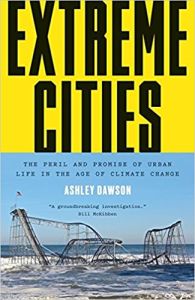Join getAbstract to access the summary!

Join getAbstract to access the summary!
Ashley Dawson
Extreme Cities
The Peril and Promise of Urban Life in the Age of Climate Change
Verso Books, 2017
What's inside?
The climate apocalypse and its economic crisis are coming. Here’s who’s to blame, and what society must do.
Recommendation
Academician Ashley Dawson’s no-holds-barred indictment of the capitalist system and its environmental impact attacks almost everyone who lives and works in the comfort and relative security of the West, especially the urban West. Dawson presents a frank and brave treatise on climate change, exposing how its impact on the world’s poor will increase, thanks to the doings of the comfortable minority. Despite including frequent, repetitive rants, Dawson focuses on cities, where he lays most of the blame for the environmental crisis. He offers radical solutions, though you may get the sense that he doesn’t have all that much faith in them. While his timeline for disaster is debatable, he ultimately paints a bleak, almost hopeless outlook for the planet and humanity. Dawson covers most of the climate change discussion, including adaptation, but he fails to address technologies, such as carbon sequestration, which offer partial solutions. While the opinions are those of the author, getAbstract recommends this treatise to those who follow issues related to science, income inequity and climate change.
Summary
About the Author
Ashley Dawson teaches English at the City University of New York. His research centers on global migration and North-South dynamics.


















Comment on this summary